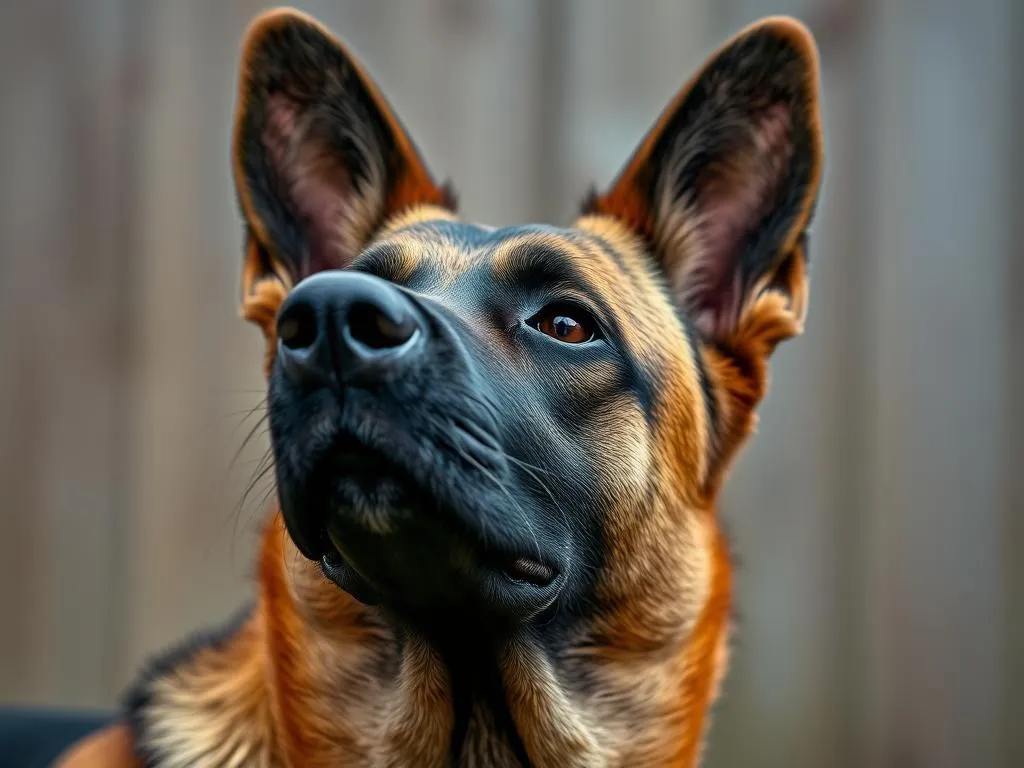
The Belgian Malinois is a breed known for its striking appearance and energetic demeanor. With a well-proportioned body, short coat, and expressive eyes, this breed captures the attention of many dog lovers. They are highly intelligent and versatile, making them popular in various roles, including police and military work, search and rescue, and as loyal family pets. However, their dynamic nature can often leave owners wondering: when does a Belgian Malinois calm down?
Understanding the behavior and temperament of a Belgian Malinois is essential for effective training and fostering a harmonious relationship between the dog and its owner. In this article, we will explore the characteristics and typical behavior patterns of the breed, factors influencing their calmness, effective calming strategies, and insights from experts and real-life case studies.
Understanding the Belgian Malinois
Breed Characteristics
Belgian Malinois are medium-sized dogs, generally weighing between 40 to 80 pounds and standing 22 to 26 inches tall at the shoulder. Their coats are short and dense, typically fawn to mahogany in color, often with a black mask. This breed is known for its high energy levels and requires substantial physical activity to stay happy and healthy.
The intelligence of a Belgian Malinois is one of its most notable traits. They are quick learners, excelling in obedience training and various canine sports. However, their intelligence also means they need regular mental stimulation to prevent boredom, which can lead to undesirable behaviors.
Typical Behavior Patterns
Belgian Malinois are instinctively driven to herd and protect, making them alert and responsive companions. They thrive on interaction with their human family members and can be reserved around strangers until they feel comfortable.
Common behavioral issues in Malinois include hyperactivity and anxiety, particularly when they do not receive sufficient exercise or mental challenges. Understanding these behavior patterns is crucial for any owner looking to cultivate a calm and balanced pet.
Factors Influencing Calmness in Belgian Malinois
Age and Development Stages
A Belgian Malinois goes through various developmental stages that can influence its temperament and behavior:
-
Puppy Phase (0-6 months): During this stage, puppies are full of energy and curiosity. They require consistent training and socialization to develop good habits and reduce hyperactivity.
-
Adolescence (6 months – 2 years): This period can be particularly challenging as Malinois enter their teenage years. They may test boundaries and exhibit heightened energy levels. Training during this phase is critical to instill discipline.
-
Adulthood (2 years and beyond): Many Malinois start to settle down as they mature, generally around two years of age. However, individual dogs may vary significantly in their energy levels and temperament.
Physical Activity Requirements
One of the most significant factors influencing when a Belgian Malinois calms down is its need for physical activity. Regular exercise not only helps manage their energy but also contributes to their overall well-being.
Recommended daily activities for Malinois include:
-
Running: A few miles of jogging or fast-paced walking can help expend energy.
-
Agility Training: Engaging in agility courses provides both physical and mental stimulation.
-
Fetch: Playing fetch is a great way to combine exercise with bonding time.
Signs of pent-up energy in a Belgian Malinois may include excessive barking, chewing, or destructive behavior. Identifying these signs and providing ample physical outlets can help mitigate hyperactivity.
Mental Stimulation and Training
Alongside physical exercise, mental stimulation plays a crucial role in calming a Belgian Malinois. Effective training can channel their intelligence positively. Various types of training can benefit the breed, including:
-
Obedience Training: Teaching basic commands and manners is fundamental for maintaining control and encouraging good behavior.
-
Agility Training: This not only exercises the body but also stimulates the mind, reducing restlessness.
-
Scent Work: Engaging a Malinois in nose work can be particularly satisfying for them, as it taps into their natural instincts.
Utilizing effective training techniques, such as positive reinforcement, can significantly reduce hyperactivity and foster a more relaxed demeanor.
Calming Strategies for Belgian Malinois
Establishing a Routine
Creating a structured routine is essential for managing a Belgian Malinois’s energy levels. Consistency in daily activities fosters a sense of security and can lead to a calmer dog. Here are some tips for establishing a balanced schedule:
-
Exercise: Incorporate regular physical activities at specific times each day.
-
Training Sessions: Short, frequent training sessions can reinforce good behavior and keep the dog engaged.
-
Rest Periods: Ensure that there are designated times for your dog to relax and recharge.
Creating a Calm Environment
The living environment has a significant impact on a Belgian Malinois’s behavior. A calm environment can help reduce anxiety and promote relaxation. Consider the following techniques:
-
Safe Spaces: Designate an area in your home where your dog can retreat to feel safe and secure.
-
Calming Aids: Utilizing tools such as calming collars, pheromone diffusers, or soft music can help soothe an anxious dog.
Socialization with Other Dogs and People
Early socialization is critical in shaping the behavior of a Belgian Malinois. Properly introducing your dog to various people, environments, and other animals can lead to a more balanced temperament. Here are some tips for safe socialization:
-
Controlled Introductions: Start with calm, controlled environments where your dog can interact with other dogs and people.
-
Positive Reinforcement: Use treats and praise to reward calm behavior during social interactions.
-
Gradual Exposure: Gradually expose your Malinois to new experiences, ensuring they feel comfortable at each stage.
Signs Your Belgian Malinois is Calming Down
Behavioral Indicators
As your Belgian Malinois matures and receives proper training, you may notice several signs indicating they are calming down:
-
Changes in Energy Levels: A transition from frenetic energy to more relaxed play can signify maturity.
-
Body Language and Posture: A relaxed dog will exhibit loose body language, less jumping, and a calm demeanor.
-
Interaction with Family Members: A calmer dog may seek more affection and show less hyperactivity when interacting with family members.
Age Milestones
While each Belgian Malinois is unique, there are general age milestones to keep in mind:
-
Puppy to Adolescent: Expect high energy levels and impulsive behavior during the first year of life.
-
Adulthood: By the age of two, many Malinois begin to settle down, although individual variations exist.
Variations Between Individual Dogs
It’s important to remember that individual dogs will vary in how quickly they calm down. Factors such as genetics, previous experiences, and the consistency of training can all play a role.
Expert Opinions and Case Studies
Insights from Dog Trainers
Professional trainers often emphasize the importance of understanding a Belgian Malinois’s unique needs. Many trainers recommend incorporating a mix of physical and mental stimulation to manage hyperactivity effectively.
One trainer noted, “The key is to keep them engaged but also provide them with a sense of purpose. They thrive on challenges and will calm down when they feel fulfilled.”
Real-Life Case Studies
Consider the case of Max, a Belgian Malinois that was highly hyperactive during his first year. His owner implemented a rigorous routine of daily runs, obedience training, and socialization with other dogs. Over time, Max transformed into a calm, well-mannered companion who could relax comfortably at home.
Another owner, Sarah, found success by introducing scent work as a mental challenge for her Malinois. After several months, her dog began to show signs of calmness, particularly after engaging in challenging scent games.
These real-life examples demonstrate that with patience, consistency, and the right strategies, a Belgian Malinois can indeed calm down over time.
FAQs about Belgian Malinois Behavior
Common Questions
How long does it take for a Belgian Malinois to calm down?
The timeline for a Malinois to calm down varies widely among individuals, but many begin to show noticeable signs of maturity by around two years of age.
What should I do if my Malinois remains hyperactive?
If your Malinois continues to exhibit hyperactive behavior, it may be beneficial to consult a professional trainer or behaviorist. They can provide tailored strategies to address specific issues.
Are there specific breeds that are easier to train than the Malinois?
While the Malinois is highly trainable, breeds such as Labrador Retrievers and Golden Retrievers may have a reputation for being more easygoing in training due to their temperament.
Conclusion
Understanding when a Belgian Malinois calms down requires patience and commitment from their owners. By recognizing the breed’s characteristics and behavior patterns, implementing effective training and exercise routines, and fostering a calm living environment, you can encourage your Malinois to develop into a well-mannered companion.
As you embark on this rewarding journey, remember that consistency and love are key. Your Belgian Malinois will thrive under your guidance, ultimately leading to a fulfilling relationship that both you and your dog will cherish.









